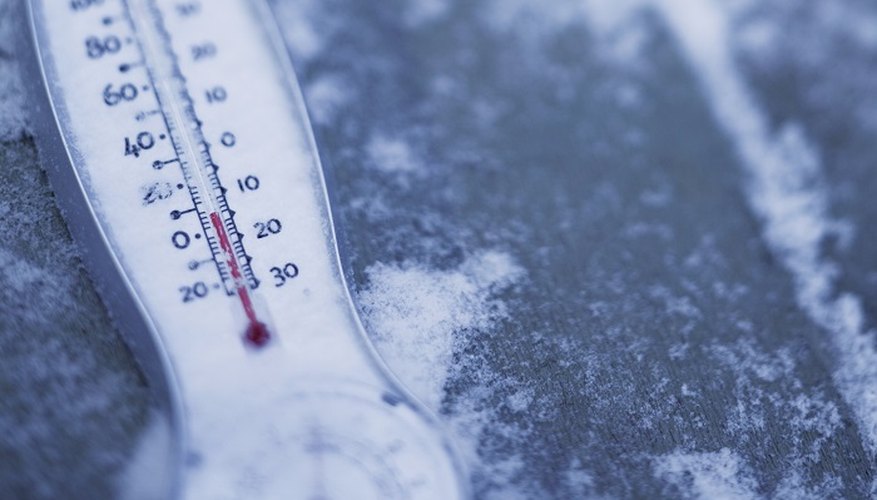Although looking up the temperature on the Internet is easy, many people enjoy having outdoor thermometers. Some just want to know if they should warm up the car before heading off to work, while others might send their temperature readings to local TV and radio stations. It's important to know where to put your outdoor thermometer for the most accurate reading.
Environmental considerations
The best location for an outdoor thermometer is in a shaded area on the north side of your home. Here, it will be the least likely to receive direct sunlight, which causes higher, inaccurate readings. The thermometer needs to receive regular airflow for ventilation and proper function, so don't block it from the elements. Situate the thermometer in a spot where the ground is typical of the area, and around 1.2 metres (4 feet) above the ground.
- The best location for an outdoor thermometer is in a shaded area on the north side of your home.
- The thermometer needs to receive regular airflow for ventilation and proper function, so don't block it from the elements.
Nearby structures
Your thermometer's sensor should be no closer than four times the height of any obstruction. This refers to houses, trees, garages and other structures. Place your thermometer in the open for best reading. If possible, position the sensor at least 30 metres (100 feet) away from asphalt or concrete surfaces.
- Your thermometer's sensor should be no closer than four times the height of any obstruction.
- If possible, position the sensor at least 30 metres (100 feet) away from asphalt or concrete surfaces.
Thermometer shelter
If you are particularly serious about thermometer accuracy, you may want to build a shelter for your thermometer. This shelter should still allow airflow, but should block sunlight and exposure to elements like rain or snow, which can cause inaccuracies. The shelter should open to the north. If you are less serious about accuracy, and don't want to have to go outside to read the thermometer, place your thermometer where you can see it from inside. Windows are bad locations for thermometers, so try to keep the sensor part of the thermometer away from the window.
- If you are particularly serious about thermometer accuracy, you may want to build a shelter for your thermometer.
- Windows are bad locations for thermometers, so try to keep the sensor part of the thermometer away from the window.
